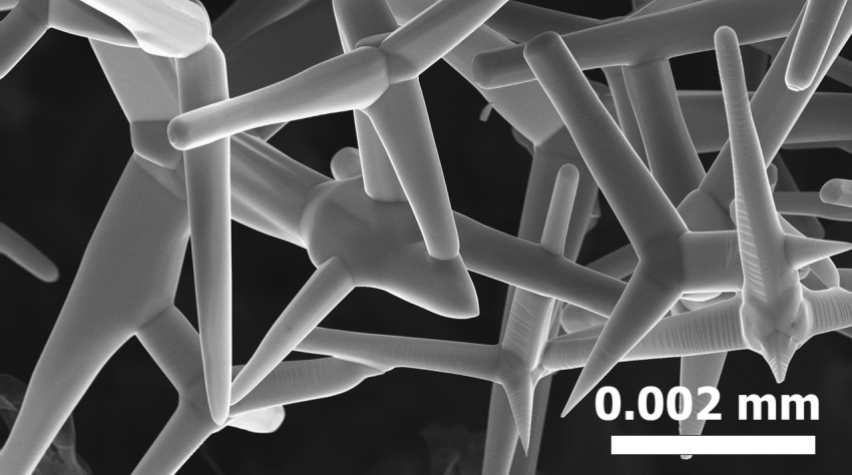
German researchers unveiled to the public the world's lightest material, which they call Aerographite. The material weights just 0.2 mg per cubic centimeter, making it 75 times lighter than Styrofoam.
Properties
Aerographite is jet-black, remains stable, is electrically conductive, ductile and non-transparent. Despite its low weight Aerographite is highly resilient. While lightweight materials normally withstand compression but not tension, Aerographite features performs well both under compression and tension loads. It is able to be compressed up to 95 percent and can be pulled back to its original form without damage.
Construction
"Think of the Aerographite as an ivy-web, which winds itself around a tree. And then take away the tree," explains one of the researchers in the official press release. The Kiel-team, consisting of Arnim Schuchardt, Rainer Adelung, Yogendra Mishra and S?ren Kaps, used a zinc oxide in powder form. By heating this up to 900 degrees Celsius, it was transformed into a crystalline form. From this material, the scientists from Kiel made a kind of pill. In it, the zinc-oxide formed micro and nano-structures, so called tetrapods. These interweave and construct a stable entity of particles that form the porous pill. In that way, the tetrapods produce the network that is the basis for Aerographite. In a next step, the pill is positioned into the reactor for chemical vapor deposition and heated to 760 degrees Celsius. "In a streaming gas atmosphere that is enriched with carbon, the zinc oxide is being equipped with a graphite coating of only a few atomic layers. This forms the tanged-web structures of the Aerographite. Simultaneously, hydrogen is introduced. It reacts with the oxygen in the zinc oxide and results in the emission of steam and zinc gas", explained one of the researchers.
Applications
Due to its unique material characteristics, aerographite could fit onto the electrodes of Li-ion batteries. In that case, only a minimal amount of battery electrolyte would be necessary, which then would lead to an important reduction in the battery's weight. With its unique combination of properties, however, a near limitless number of applications exist. The researchers from Kiel University and Hamburg University of Technology published their results earlier this month in the scientific journal Advanced Materials and presented their findings to the public yesterday.



Comments
helmets are a good option to start with as well as warfare material
If it is true that Aerographite is opaque to X-Ray's, wich are gamma rays, it could form a ultralight schielding for Medical X-ray's, and maybe also in the Nuclear field. Schielding Nuclear processes in Powerplants for example. Amazing possibilities. Francis Cuigniez Radiologist. Belgium